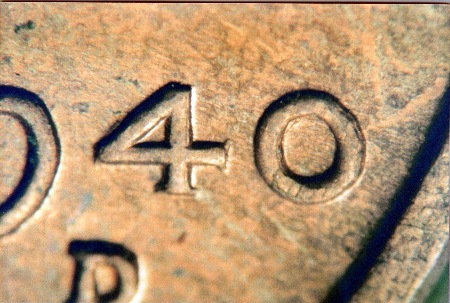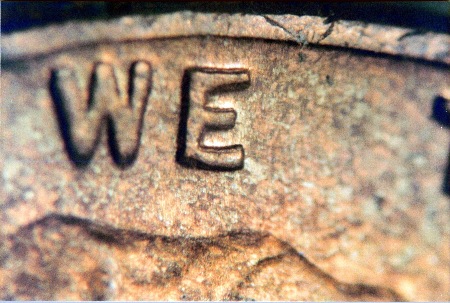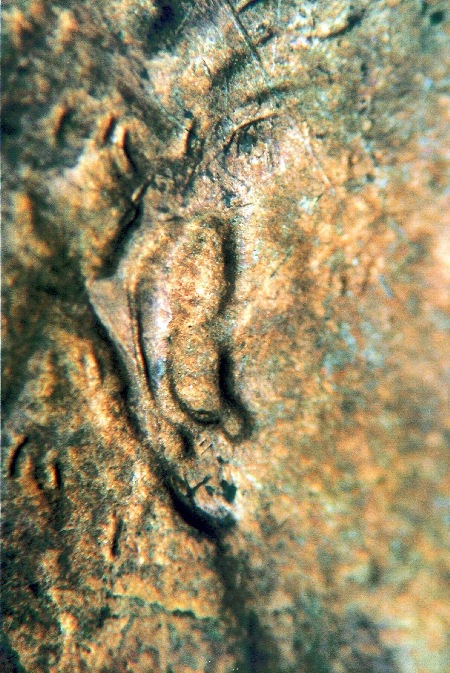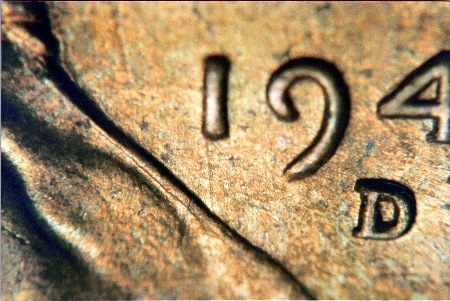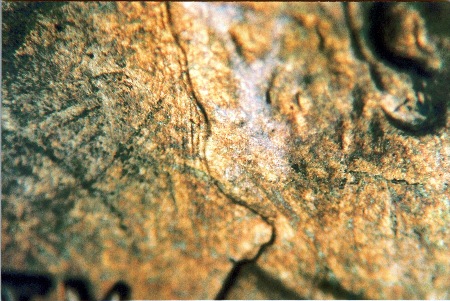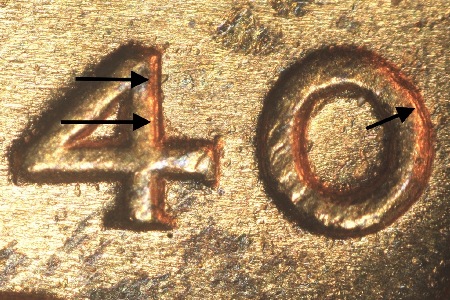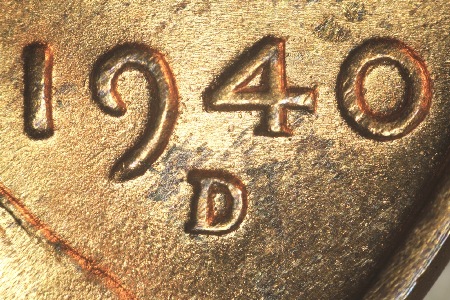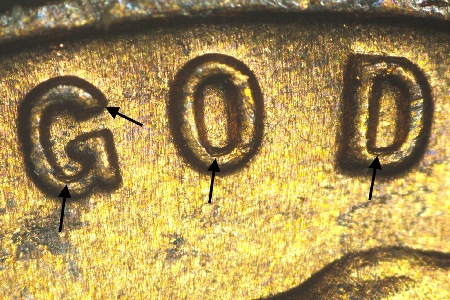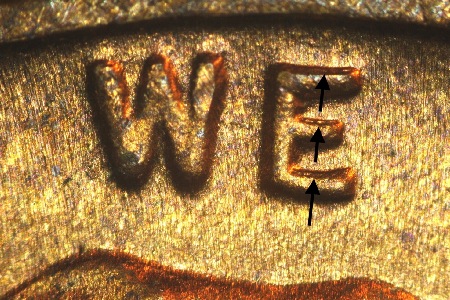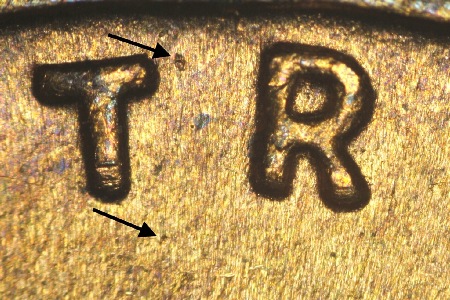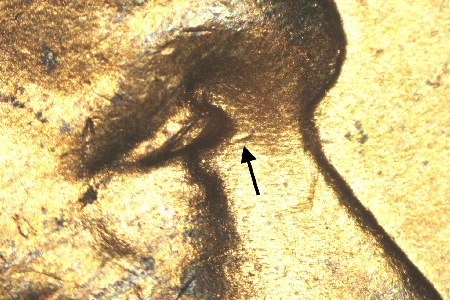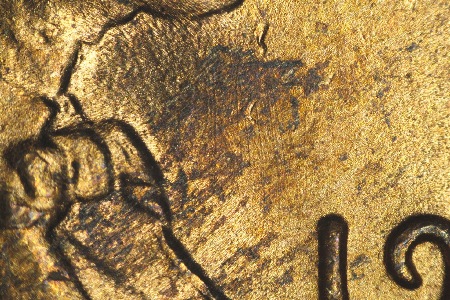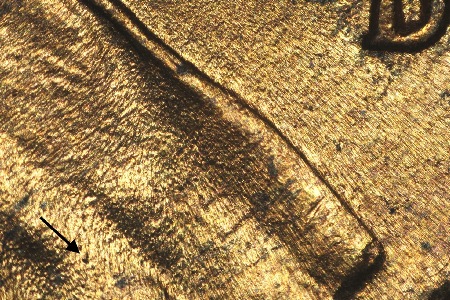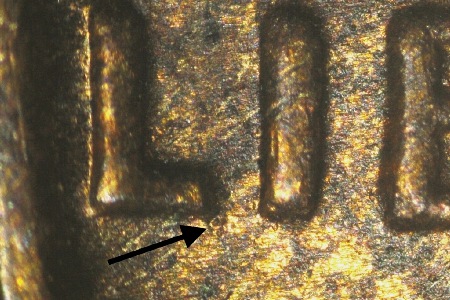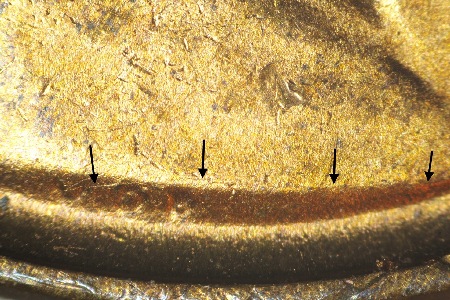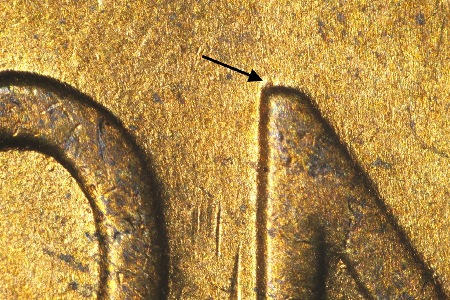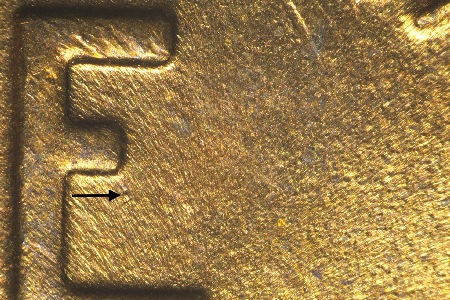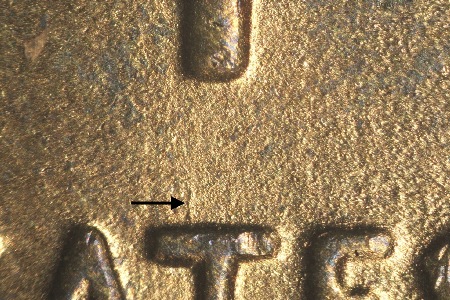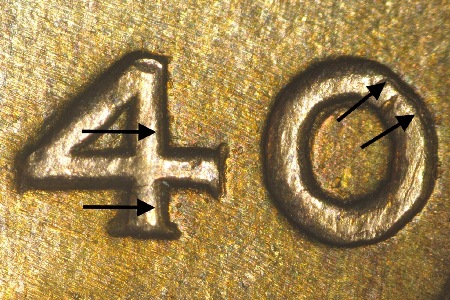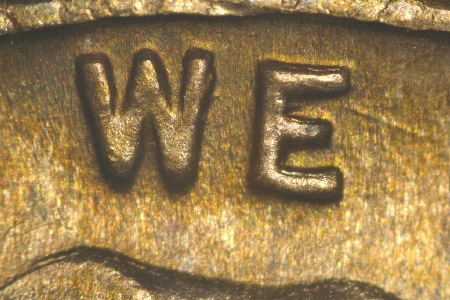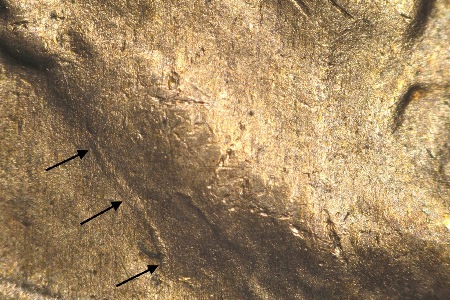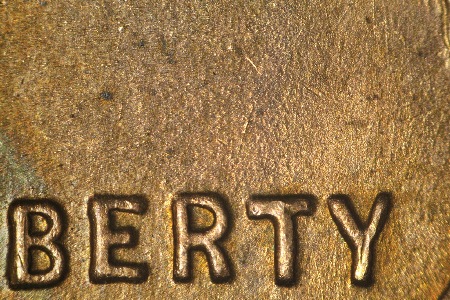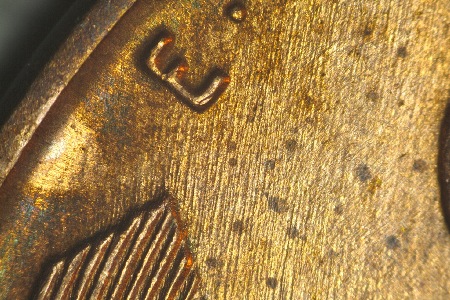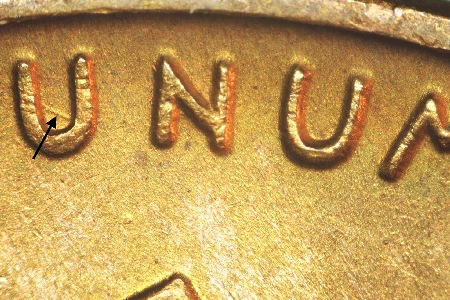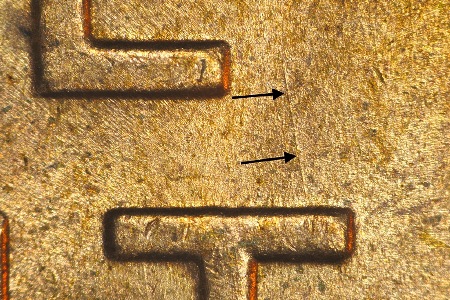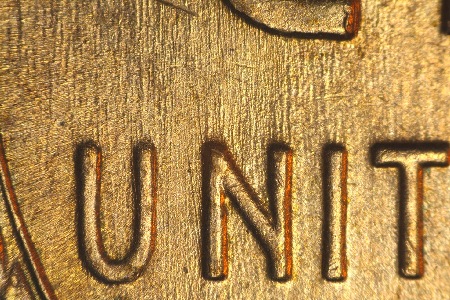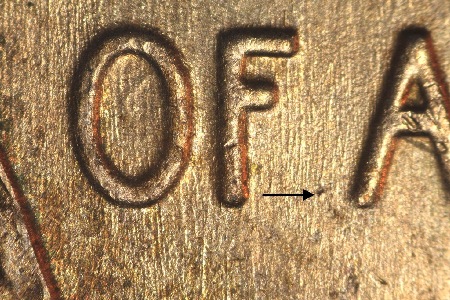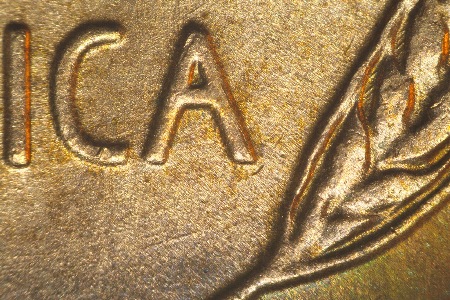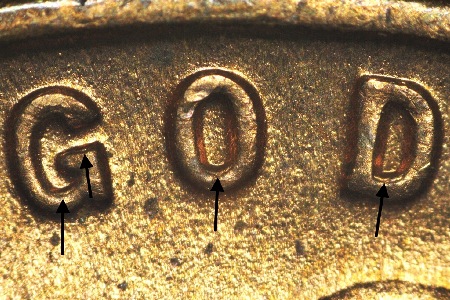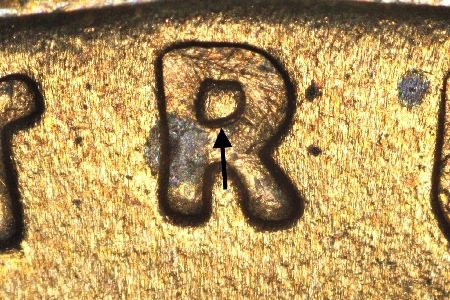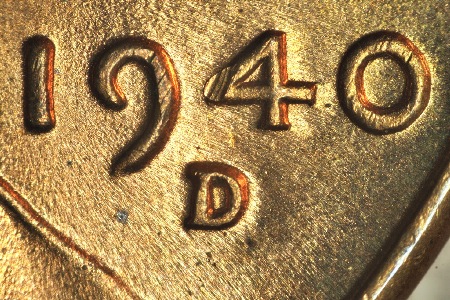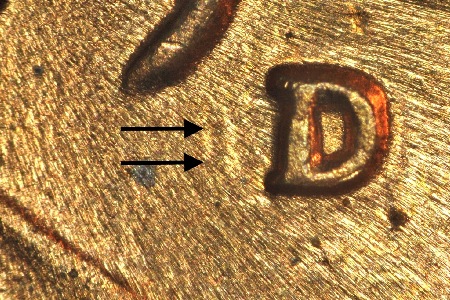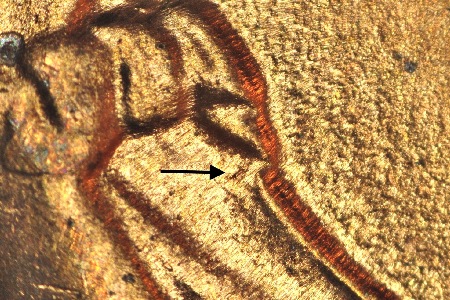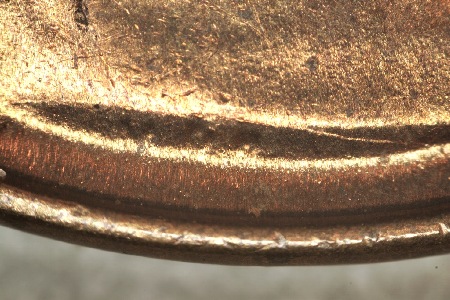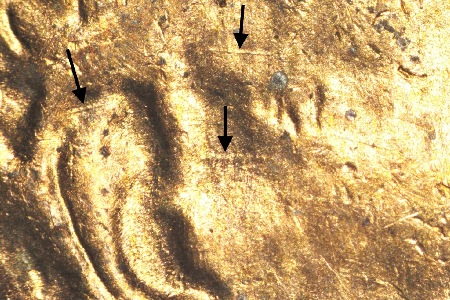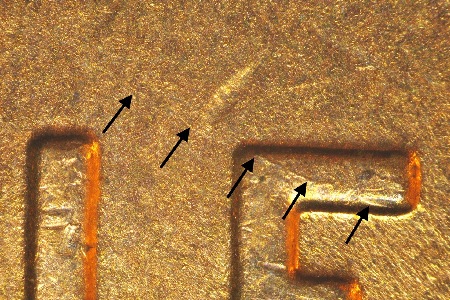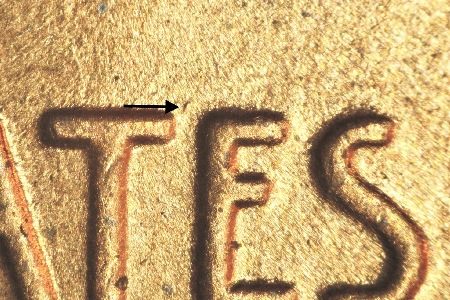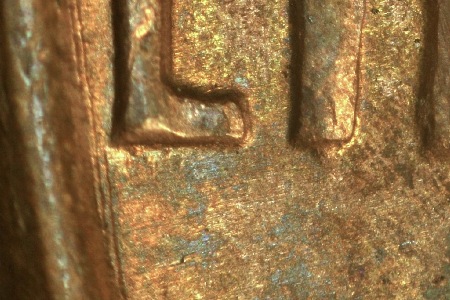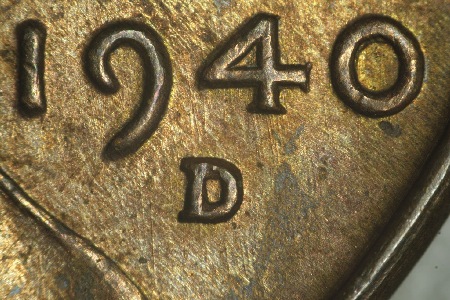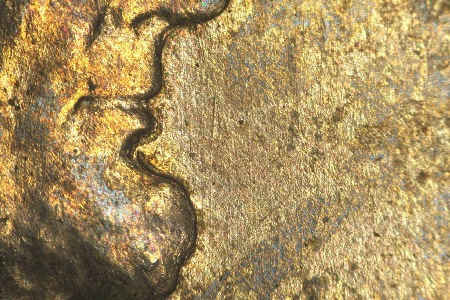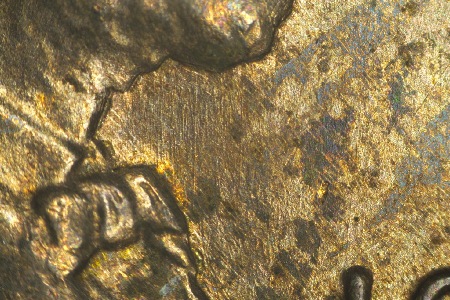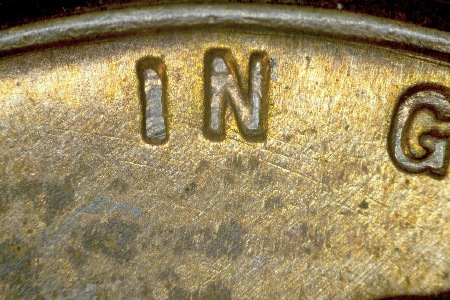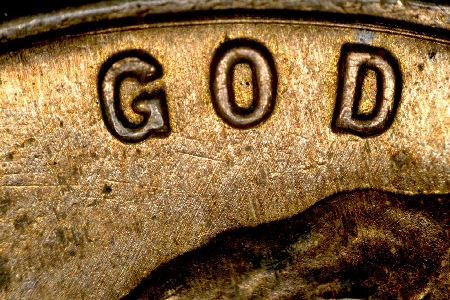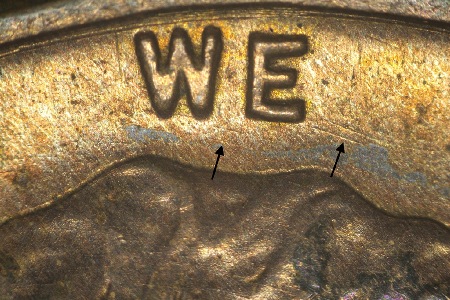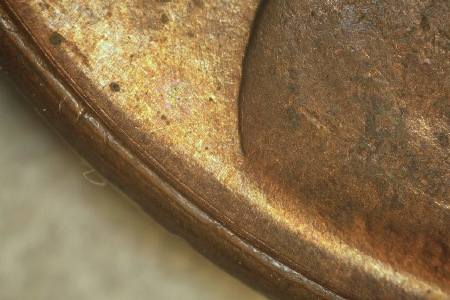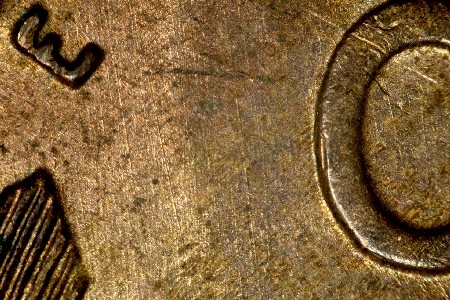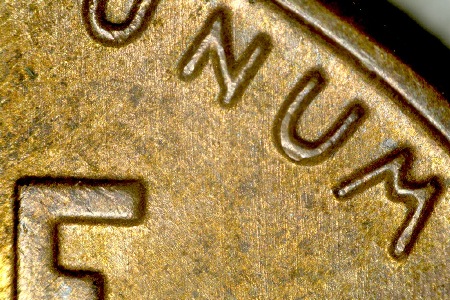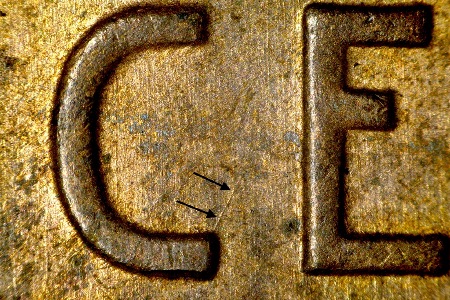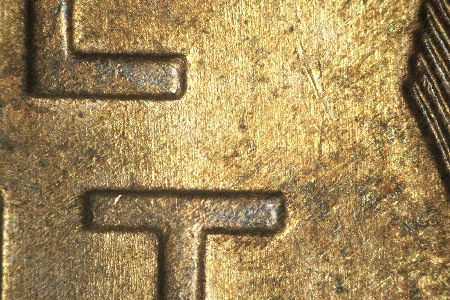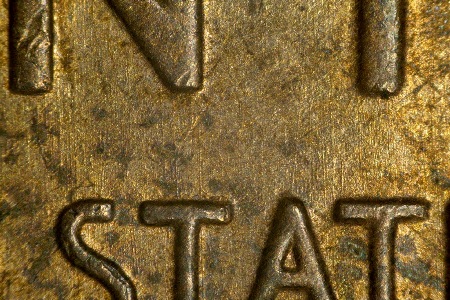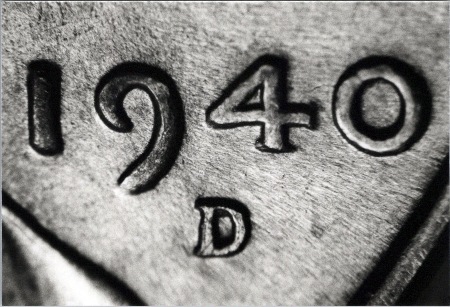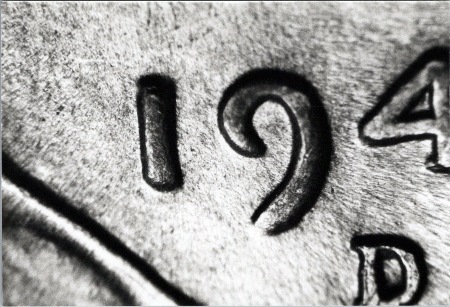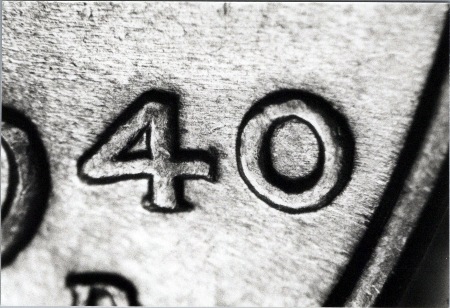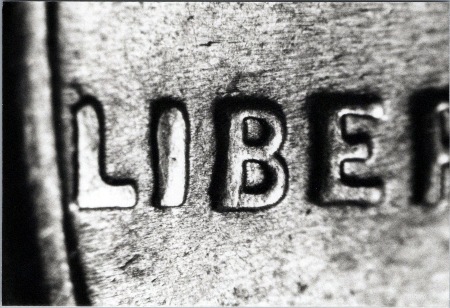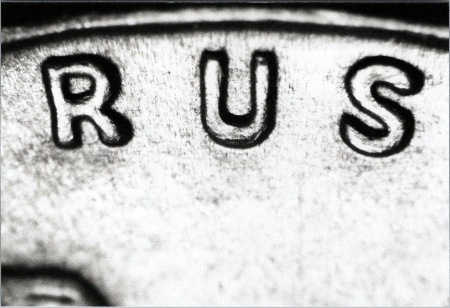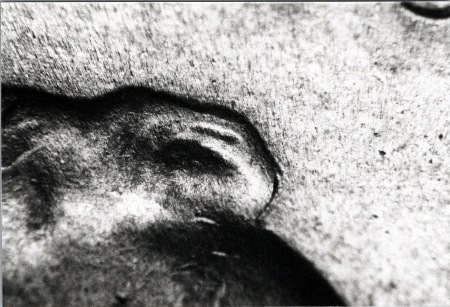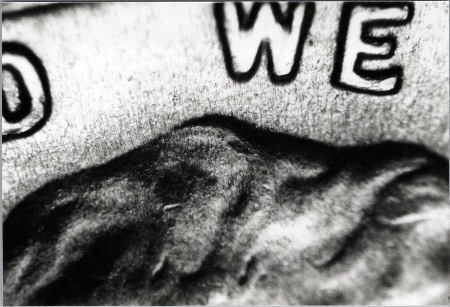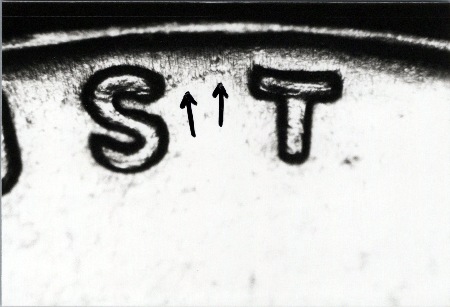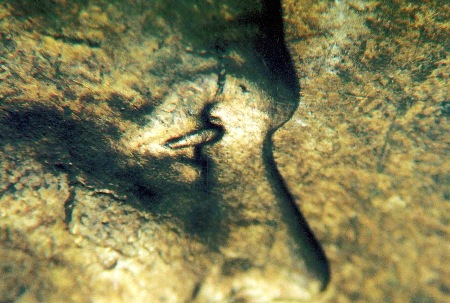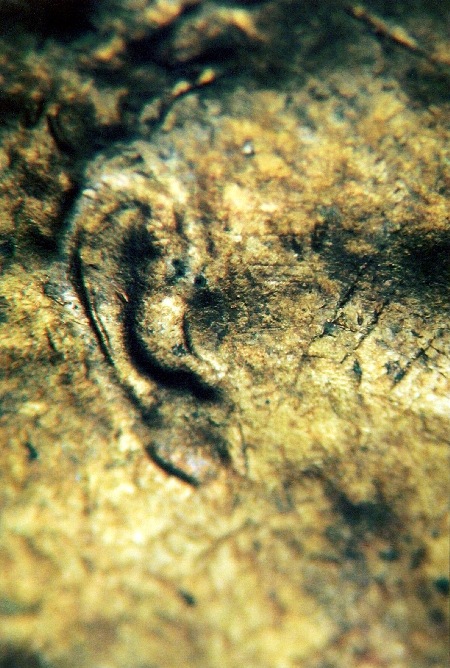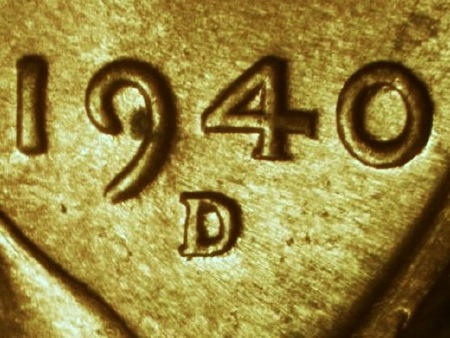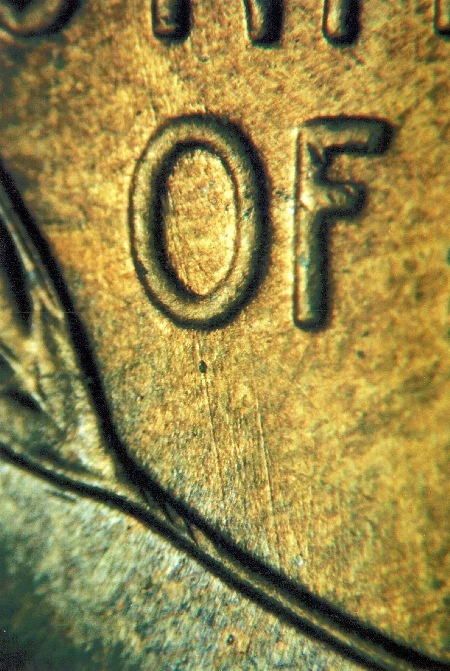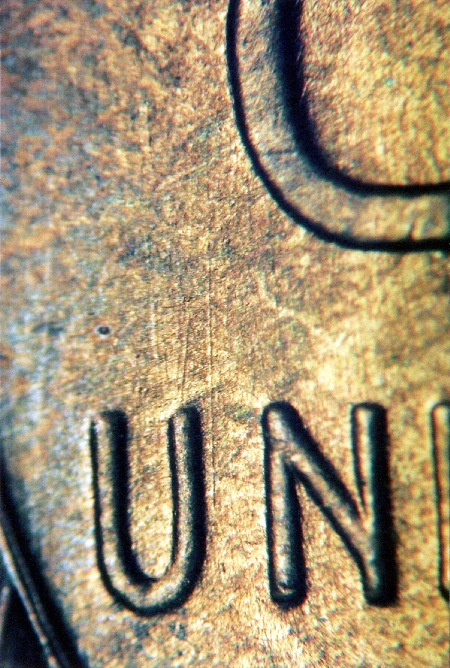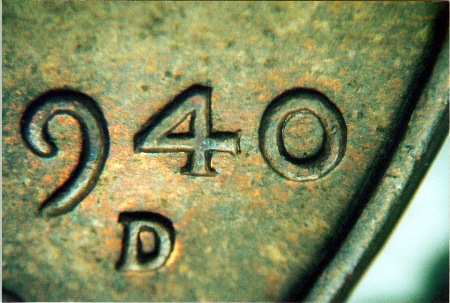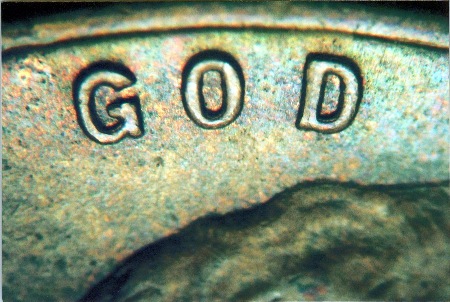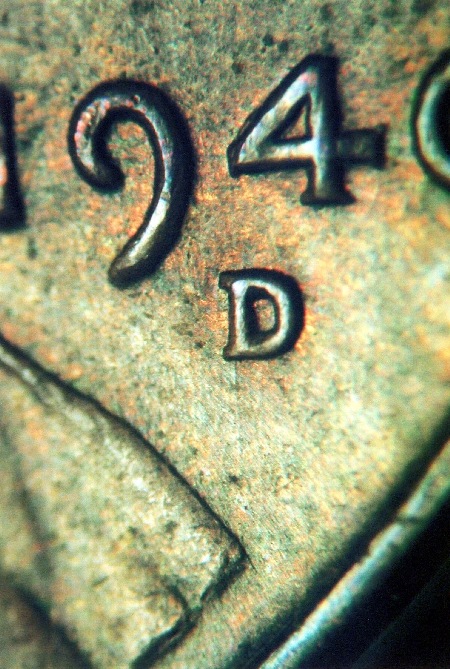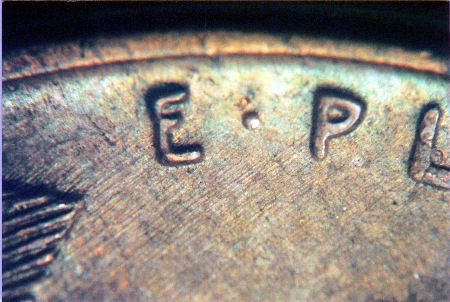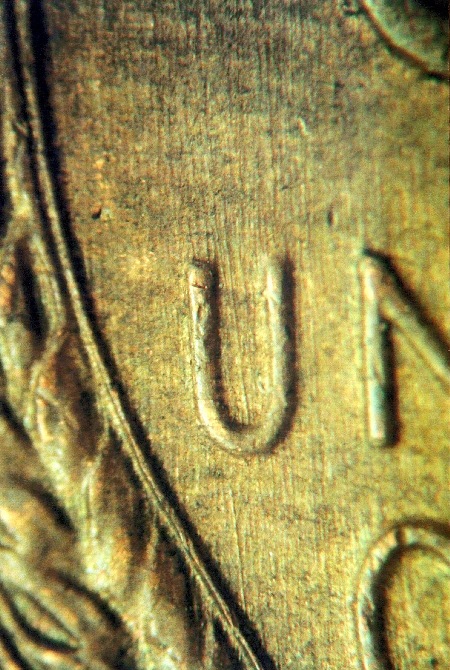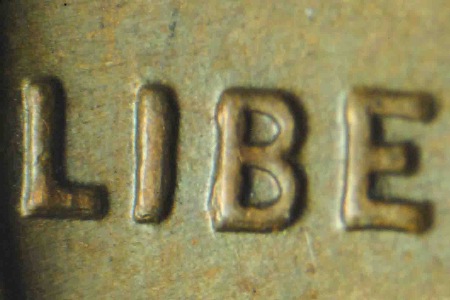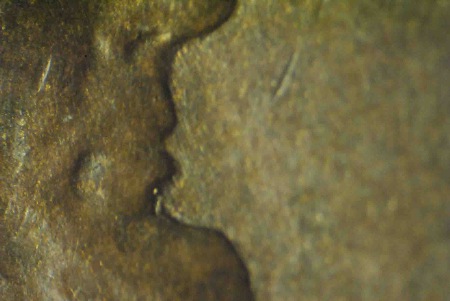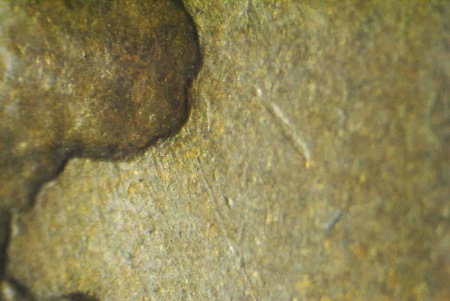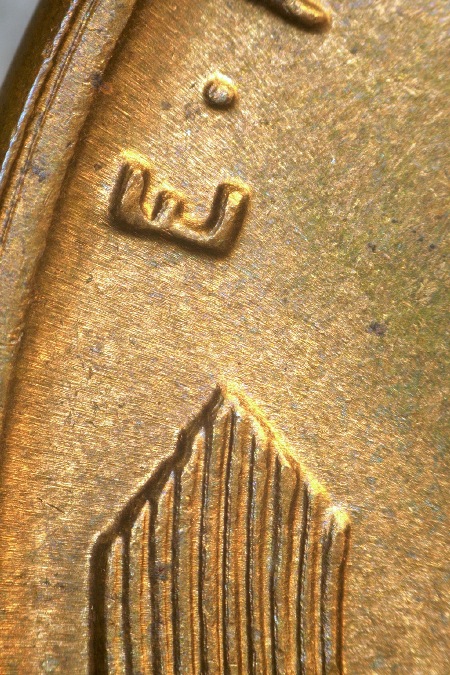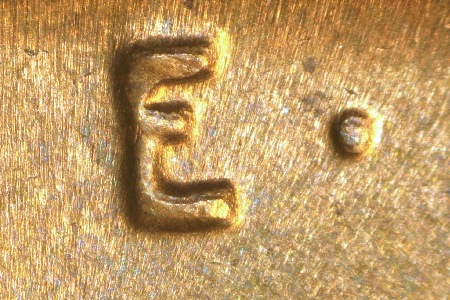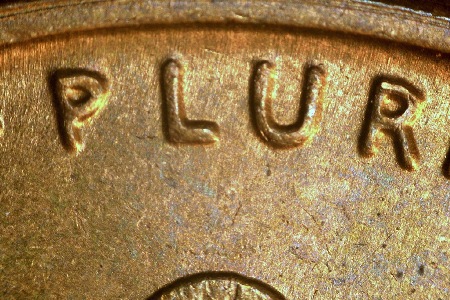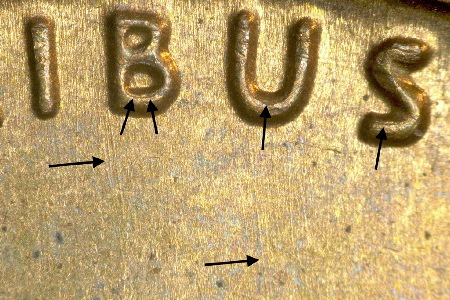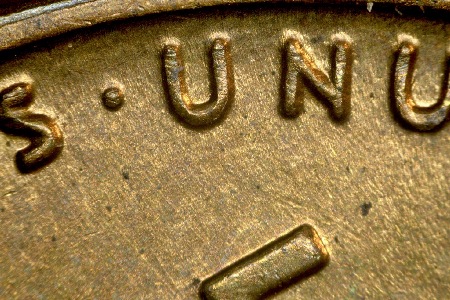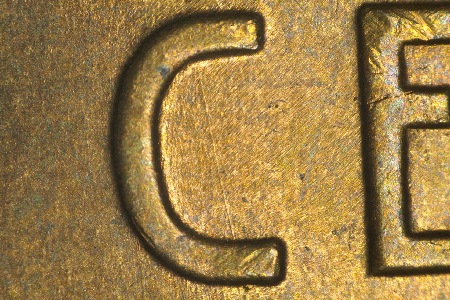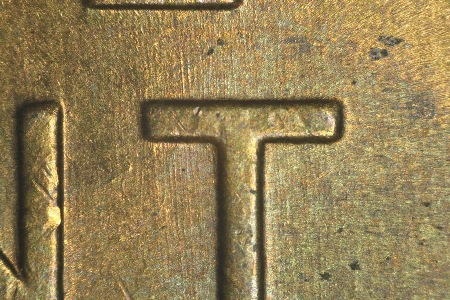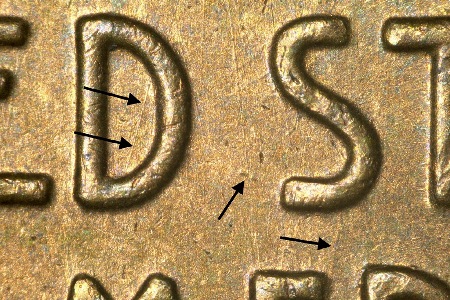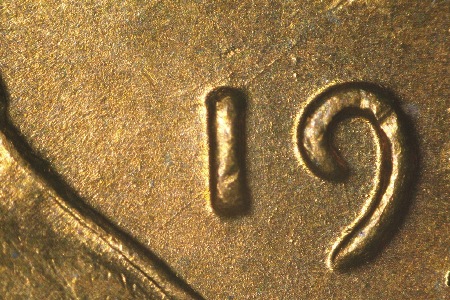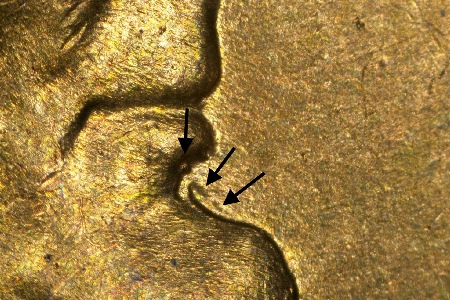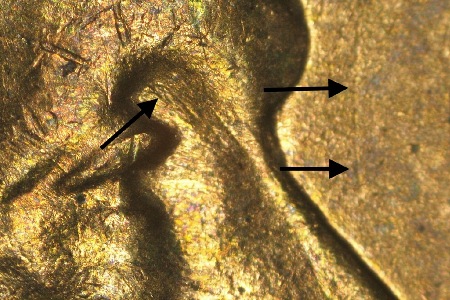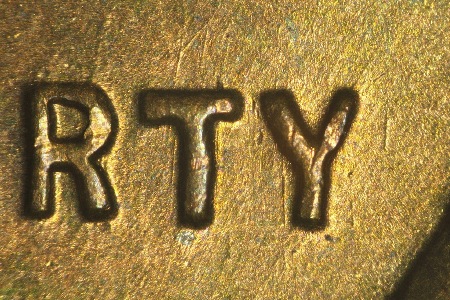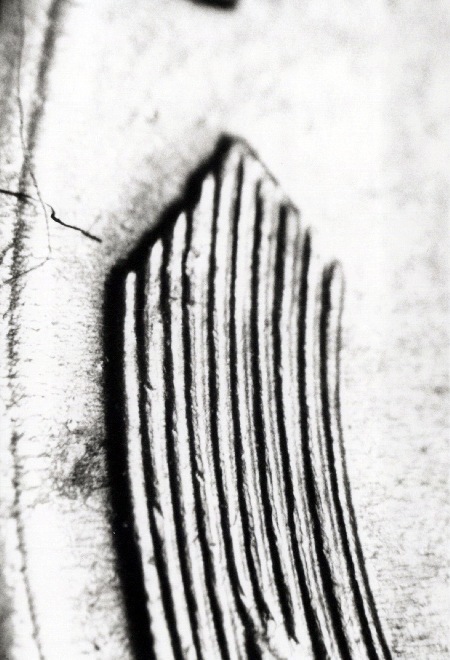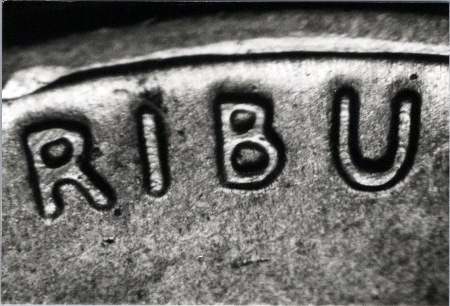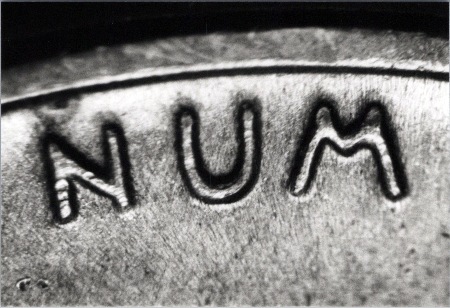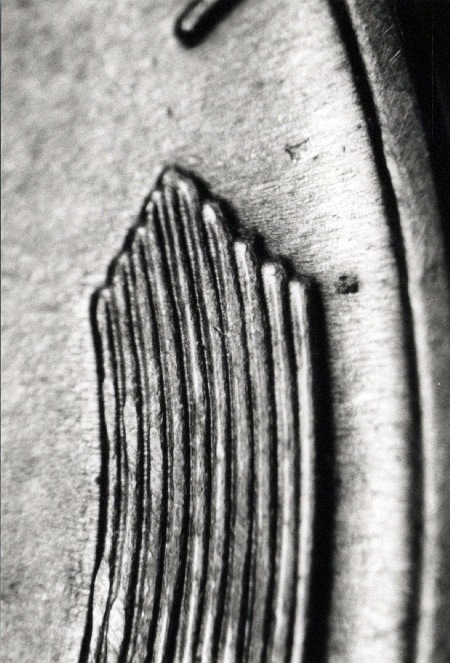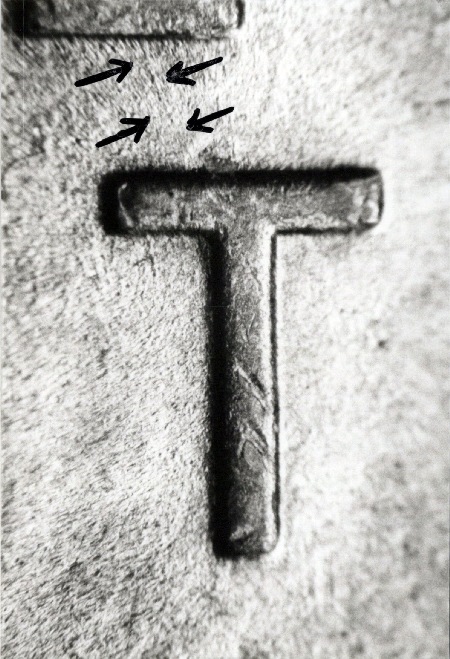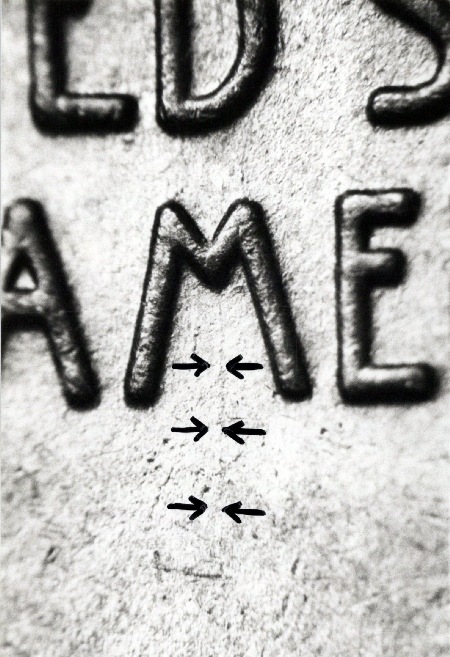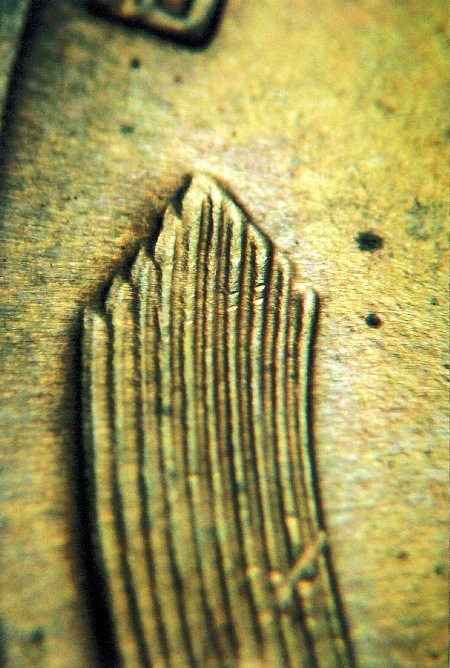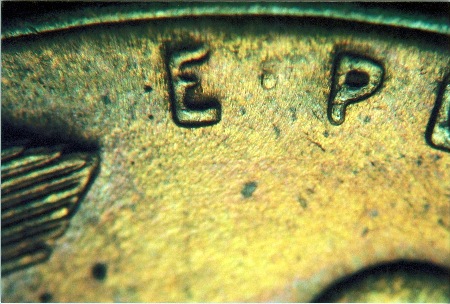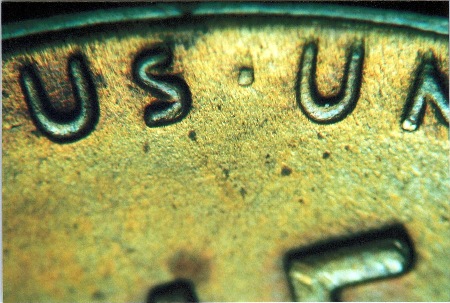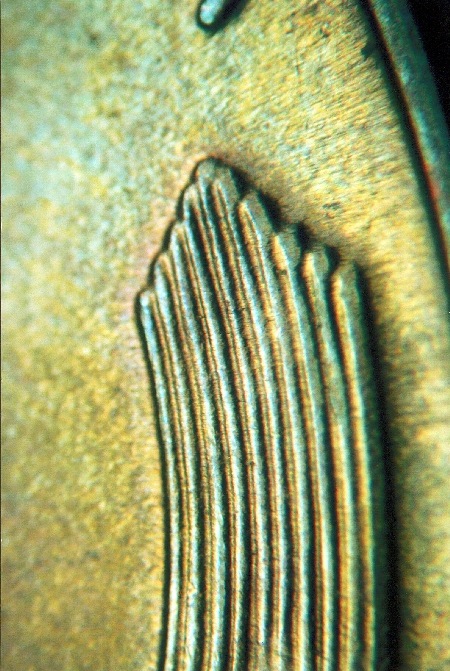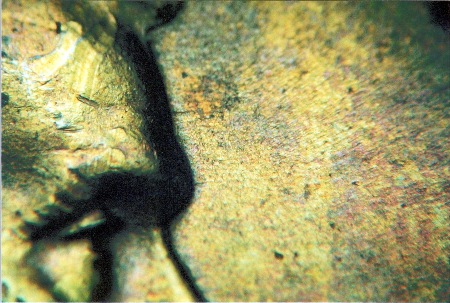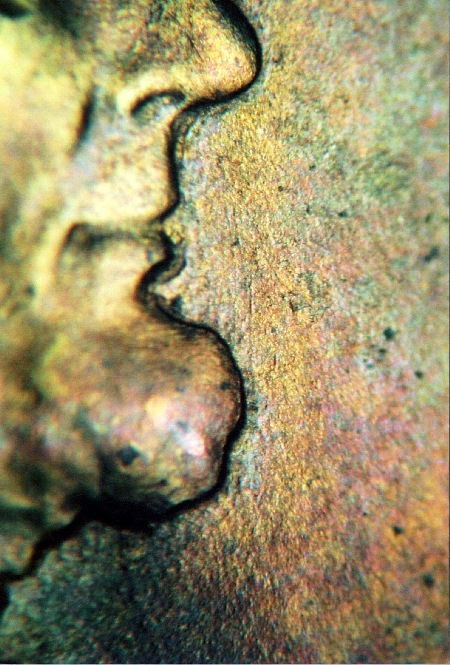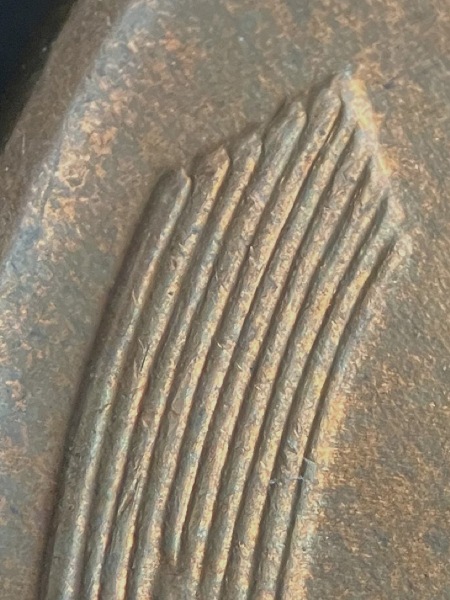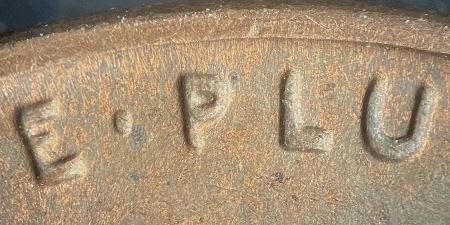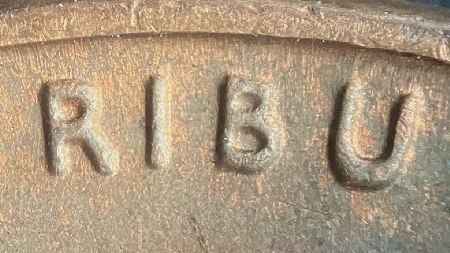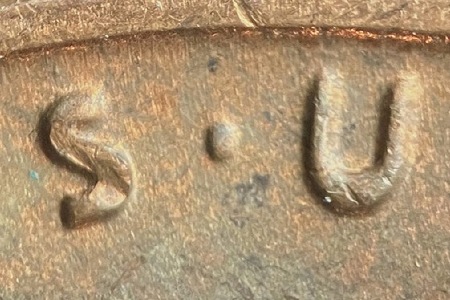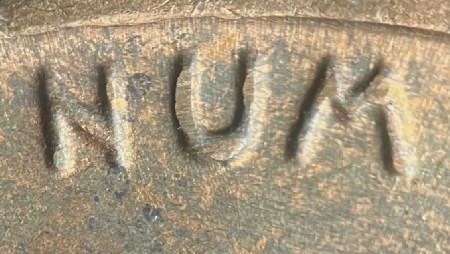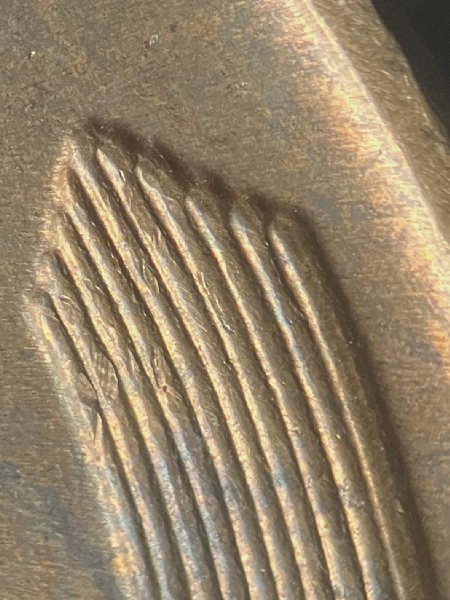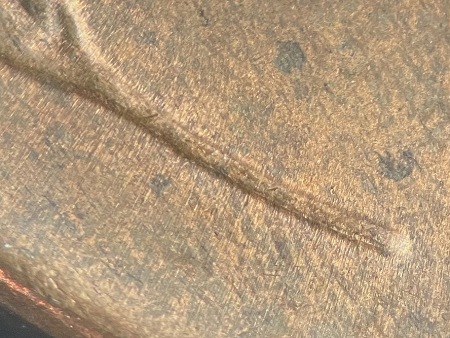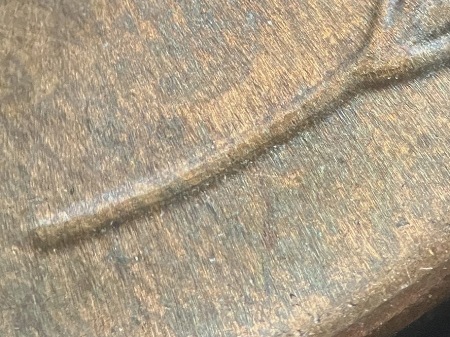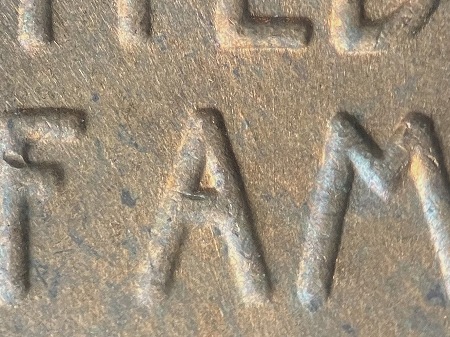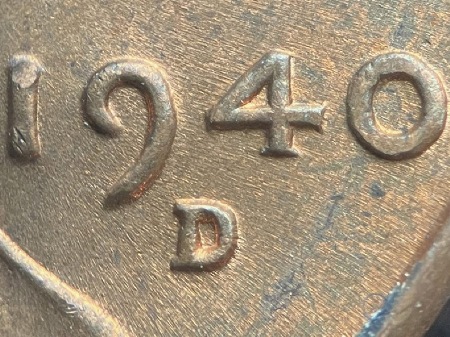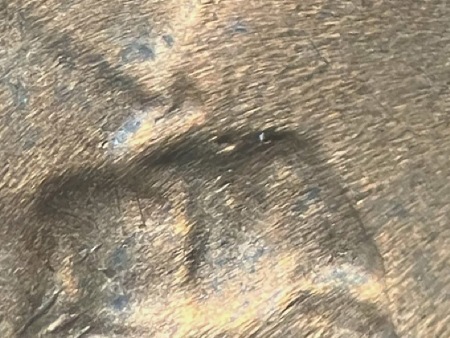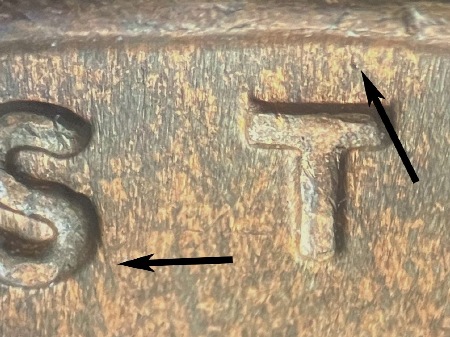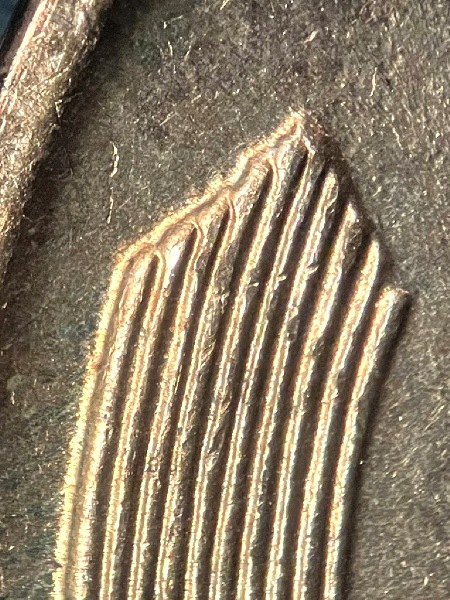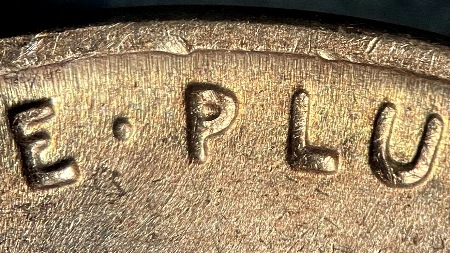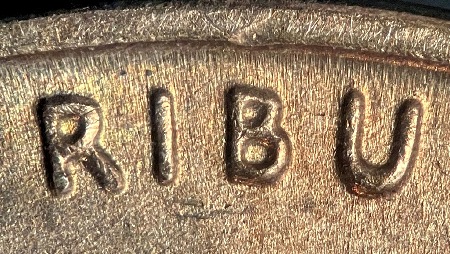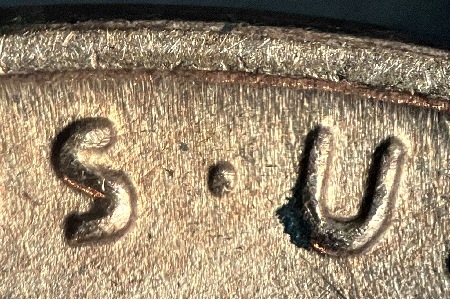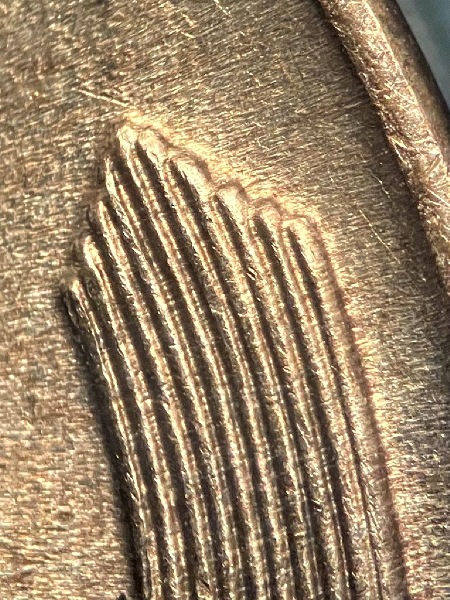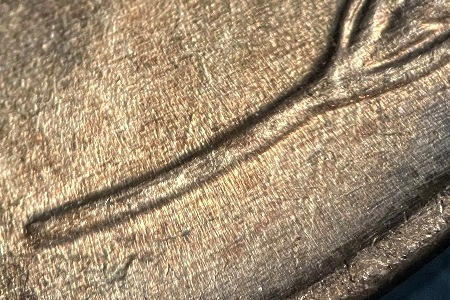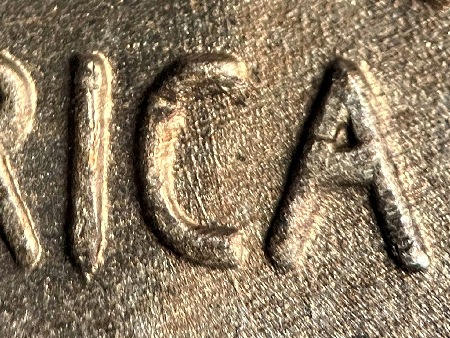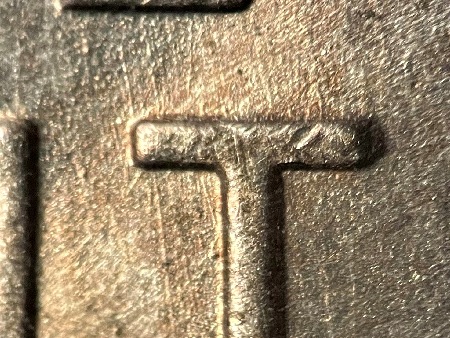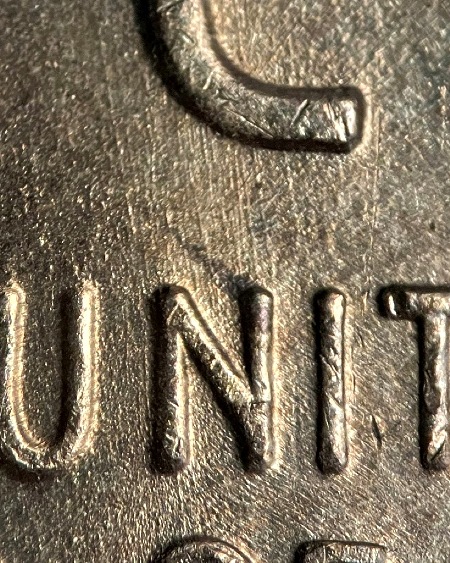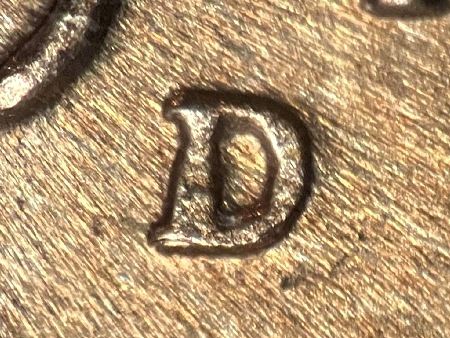


 |
 |
 |
 |
 |
 |
 |
 |
 |
 |
 |
 |
 |
 |
 |
 |
 |
 |
 |
 |
 |
 |
 |
 |
1940-D 1¢ WDDO-001
Description: Doubling shows
lightly on the 40 in the date, E in WE, and north on the eyelid and inner ear.
Die Markers:
Obverse: Die scratch runs
SSE from the left side of 1 in the date.
Die scratches run north to south in front of and behind Lincoln’s head.
Reverse: Die scratches run
NNW to SSE through and below C in CENT.
Submitted By: James Moreland
Cross References: CONECA: 3-O-II-C+IV, potentially Coppercoins:
1940D-1DO-001
1940-D 1¢ WDDO-002
Description: A light spread
shows on IN GO WE TRUST and the 40 of the date. A possible minor doubled eye also
shows southeast of the normal eye.
Die Markers: Obverse: Two die gouges show
to the right of the first T in TRUST. A
series of vertical die scratches show to the NW of the 1 in the date. A small die gouge (dot) shows on Lincoln’s
bust well southwest of the date. A small
die gouge (dot) shows on the lower right edge of the L in LIBERTY. A light die crack traverses the truncation of
Lincoln’s bust above the VDB initials. Reverse: A small die gouge shows on the
upper left edge of N in ONE. A die gouge
(dot) shows SSE of middle crossbar of E in ONE. A short die scratch runs north from second T
in STATES.
Submitted By: J.C. Moreland
Cross References: Coppercoins:
1940D-1DO-002
1940-D 1¢ WDDO-003
Description: Doubling shows on IN GOD WE TRUST and the 4
and 0 in the date.
Die
Markers: Obverse: A diagonal die scratch runs SSE from the
upper right edge of the E in WE. Long
undulating die gouges show on Lincoln’s chin and on his neck below the beard. A
concentric die scratch runs near the rim below the truncation of Lincoln’s
bust. A light, diagonal die scratch shows
above the letters RT in LIBERTY. A die
gouge is present well north of E in LIBERTY.
Reverse: Vertical
die scratches show around the left wheat tip.
A diagonal die scratch runs through the lower opening of the U in UNUM. A die scratch runs mostly north from the upper
right edge of the T in CENT. Vertical
die scratches run through OF and the letters UNIT in UNITED. A die gouge (dot) shows to the left of the
lower first A in AMERICA. A diagonal die
scratch shows below the last A in AMERICA.
Submitted By: John
A. Wexler
Cross References: None
known
1940-D 1¢ WDDO-004
Description: Doubling shows on IN GOD WE TRUST and the 4
and 0 in the date.
Die
Markers: Obverse: A faded die gouge shows in the field to the
left of the mint mark. A small die gouge
shows below the right edge of Lincoln’s bowtie.
An arcing die crack runs through the truncation of Lincoln’s bust above
the VDB initials. A series of mostly horizontal
die scratches show inside and around the upper ear. Reverse: A mostly
horizontal die crack runs through the upper crossbar of the E in ONE. A tiny die gouge (dot) shows above the letters
E and S in STATES.
Submitted By: J.C.
Moreland
Cross References: CONECA:
2-O-II-C
1940-D 1¢ WDDO-005
Description: Slight doubling shows on the lower L and I in
LIBERTY.
Die
Markers: Obverse: A series of short, concentric die scratches show
around the letters RTY in LIBERTY. A curved,
diagonal die scratch runs from right of Lincoln’s eye to the lower edge of his nose.
Vertical die scratches connect Lincoln’s
lower nose with his chin. Vertical die
scratches run below Lincoln’s chin. Diagonal
die scratches run through the lower N in IN. A “hashmarked” pattern of die scratches show below
GOD. Diagonal die scratches run through the
lower letters in WE. Diagonal die
scratches show between the letters ST in TRUST. A concentric die scratch shows at the rim
behind Lincoln’s lower bust. Reverse: A series of vertical die scratches
run between the left wheat tip and the O in ONE. Vertical die scratches show below UNUM. A diagonal die scratch runs NE from the lower
C in CENT. Vertical die scratches show
around the T in CENT. Vertical die
scratches show above STATES.
Submitted By: Lou
Coles
Cross References: None
known
1940-D 1¢ WDDO-006
Description: Extra thickness
is present on the date, LIBERTY, and IN GOD WE TRUST. An extra vertical bar above L in LIBERTY is
present.
Die Markers:
Obverse: Die crack runs ENE
from the upper S in TRUST.
Reverse: The reverse die is
listed as WDDR-002. Long die scratch
runs south from the center of M in AMERICA.
Short die scratch runs SSE from upper left T in CENT.
Submitted By: Bill Wilson
(Upgraded photos on a coin by John A. Conway)
Cross References: CONECA: 1-O-VIII-CCW+VI
1940-D 1¢ WDDO-007
Description: An eyelid shows
north of the main eyelid.
Die Markers:
Obverse: Die scratches run
NNE/SSW on the top of the forehead, E/W to the right of the upper ear, and
NNW/SSE to the northwest of 9 in the date.
Reverse: Die scratches run
mostly N/S to NNW/SSE present through the O in OF, UN in UNITED, and E in ONE.
Submitted By: Brian Ribar
Cross References: None known
1940-D 1¢ WDDO-008
Description: Doubling can be
seen on the 40 in the date, and IN GOD WE TRUST.
Die Markers:
Obverse: Die scratches run south
from the left side of the mint mark, right of E in WE.
Reverse: Die scratches run
north to south in the U in UNITED and below EPL.
Submitted By: Whaden Curtis
Cross References: None known
1940-D 1¢ WDDO-009 Description: A close CW spread from a pivot at about 3:00 shows on the LIBE of LIBERTY. Die Markers: Obverse: A weak die scratch runs SSE from the bottom front of Lincoln’s chin. Weak die scratches run SSE from the lips. Reverse: A die scratch runs NNW from the top right of the E in AMERICA. Submitted By: John Shields Cross References: None known
1940-D 1¢ WDDR-001
Description: Light separation lines show on E PLURIBUS
UNUM and both wheat tips.
Die
Markers: Obverse: Diagonal die scratches run through the upper
and lower 1 in the date. Die gouges show
between Lincoln’s lower lip and chin. A
light vertical die scratch runs north from the bridge of Lincoln’s nose. A diagonal die scratch shows above the eyelid.
A series of vertical die scratches show
through and around the letters TY in LIBERTY.
Reverse: A diagonal
die scratch runs through the opening of the C in CENT. A series of vertical die scratches run through
the T in CENT. A long die scratch runs
mostly north between the letters U and N in UNITED. A diagonal die scratch runs through the
opening of the D in UNITED. A die gouge
(dot) shows to the left of the lower first S in STATES. A diagonal die scratch connects the lower
first S in STATES with the E in AMERICA. About vertical die scratches run through AT in
STATES.
Submitted By: J.C.
Moreland
Cross References: None
known
1940-D 1¢ WDDR-002
Description: Very close class
II spread shows toward the center on both upper wheats, EPU, and the dots.
Die Markers:
Obverse: The obverse die is
listed as WDDO-006. Die crack runs ENE
from the upper S in TRUST.
Reverse: Long die scratch
runs south from the center of M in AMERICA.
Short die scratch runs SSE from upper left T in CENT.
Submitted By: Bill Wilson
(Upgraded photos on a coin by John A. Conway)
Cross References: None known
1940-D 1¢ WDDR-003
Description: Strong extra
thickness is present on both wheat ears and stems, EPU, and the dots.
Die Markers:
Obverse: Die scratches run
east from the forehead, and north to south in front of the chin and lips.
Reverse: None noted.
Submitted By: Whaden Curtis
Cross References: None known
1940-D 1¢ WDDR-004
Description: Strong extra
thickness shows on EPU, the dots, both wheat ears, and both wheat stems.
Die Markers: Obverse: Two horizontal die scratches show just inside
the rim above the letters U and S in TRUST.
A die scratch runs mostly north from the upper T in LIBERTY. A series of light vertical die scratches show
on Lincoln’s neck and below his chin.
Two die gouges show on the lower shoulder fold of Lincoln’s jacket. A
diagonal die scratch runs NW from the back of Lincoln’s lower bust.
Reverse: A series of vertical die scratches show to
the right of the E in ONE. Vertical die
scratches show around the T in CENT. A
series of vertical die scratches run through the letters UNI in UNITED. A vertical die scratch connects the lower F
in OF to the left wheat stem. A series of vertical die scratches show through
ERIC in AMERICA.
Submitted By: Brian Allen (Updated photos on a coin from
Daniel Griffin)
Cross References: None known
1940-D 1¢ WDDR-005
Description: Extra thickness
is seen on EPU, both dots, both wheat ears, and the top of the O in ONE.
Stage A:
Stage B:
1940-D 1¢ WDDR-006
Description: Extra thickness is seen on E PLURIBUS UNUM,
both dots, both wheat ears, and UNITED STATES OF AMERICA.
| ||



